The Colour Rendering Index
Ra or CRI, is a dimensionless index that ranges from 0 to 100 and partially describes the capacity of a light source to faithfully render the colour of a consistently lit object in line with what a reference source would do. It is based on the adherence of a source to the light emitted by a tungsten filament evaluated on a panel of 14 colour samples, of which only the first 8 are taken into consideration, none with saturated hues.
The
TM-30 index allows for a more complete reading on the way a source is able to render colour. It introduces the concept of saturation, uses a balanced mixture of incandescent lamps and sunlight as a reference and extends colour samples to 99 subdivided into 7 reference areas with colours from nature for example flowers and leaves, skin tones, colours of paintings, textiles, plastics, printed material and 14 CRI colour samples.
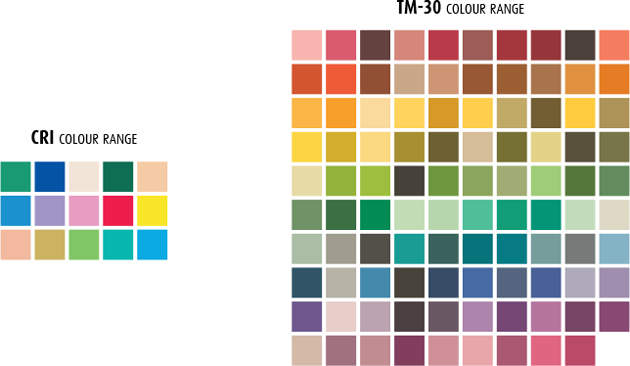
The additional information that TM30 can give is provided by two graphs that summarise the values relating to Rf, Rg and Hue Shift (a shift in the colour hue, or the perception of a false colour compared to what we would see in sunlight), and the second how the source works for groups of materials (99CES) for immediate understanding:
The “rendering” of the source is expressed with a series of explanatory graphics of the colorimetric and qualitative characteristics and 2 distinct indexes.
The fidelity index Rf, which describes the ability of the source to render colours.
It varies on a scale of 0 to 100 where 100 is perfect adherence. It is also possible to have Rf targeted on one of the seven reference areas. For example “Rf skin” refers to the ability of the source to express the colours relating to the reference area concerning skin tone. It is similar to Ra but can be lower given that the reference colours range from 14 to 99.
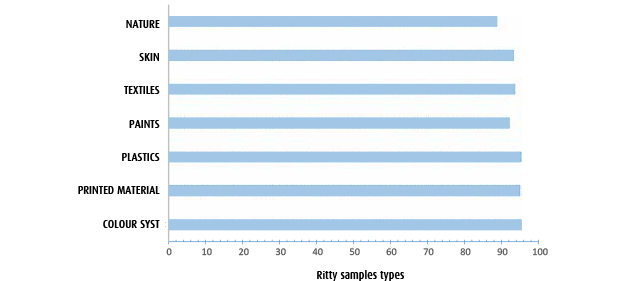 COLOUR RENDERINGTM30The Gamut index Rg
COLOUR RENDERINGTM30The Gamut index Rg, which expresses the saturation level of the colours lit by the source. It varies on a scale from 60 to 140.
Values lower than 100 indicate a decrease in saturation, higher values indicate an increase in saturation therefore more vivid colours.
Colours will be more or less saturated depending on whether they are inside or outside the reference circle.
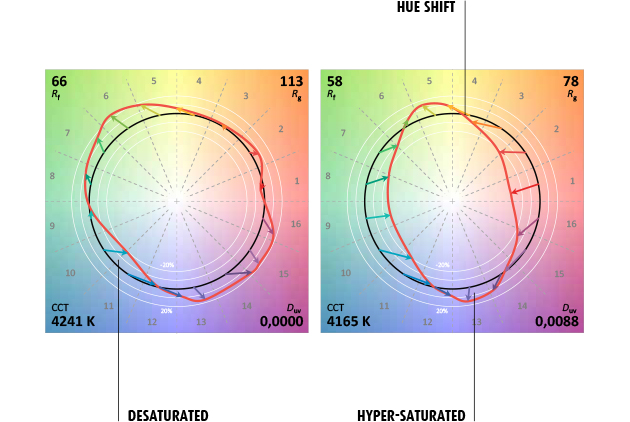
The last in-depth graph is the detail of the deviation and rendering of semitones compared to the reference source that is represented by the following diagram:

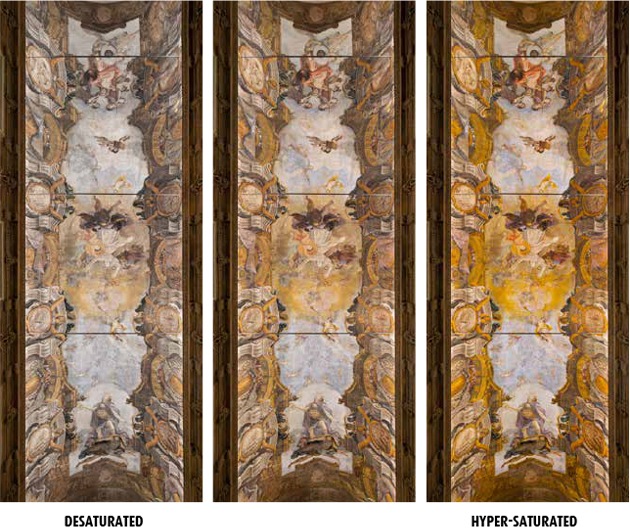
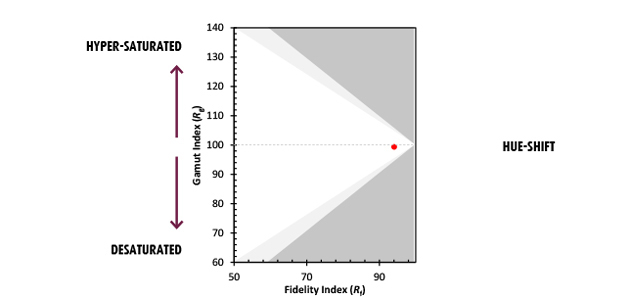


 The additional information that TM30 can give is provided by two graphs that summarise the values relating to Rf, Rg and Hue Shift (a shift in the colour hue, or the perception of a false colour compared to what we would see in sunlight), and the second how the source works for groups of materials (99CES) for immediate understanding:
The additional information that TM30 can give is provided by two graphs that summarise the values relating to Rf, Rg and Hue Shift (a shift in the colour hue, or the perception of a false colour compared to what we would see in sunlight), and the second how the source works for groups of materials (99CES) for immediate understanding: COLOUR RENDERING
COLOUR RENDERING The last in-depth graph is the detail of the deviation and rendering of semitones compared to the reference source that is represented by the following diagram:
The last in-depth graph is the detail of the deviation and rendering of semitones compared to the reference source that is represented by the following diagram:

